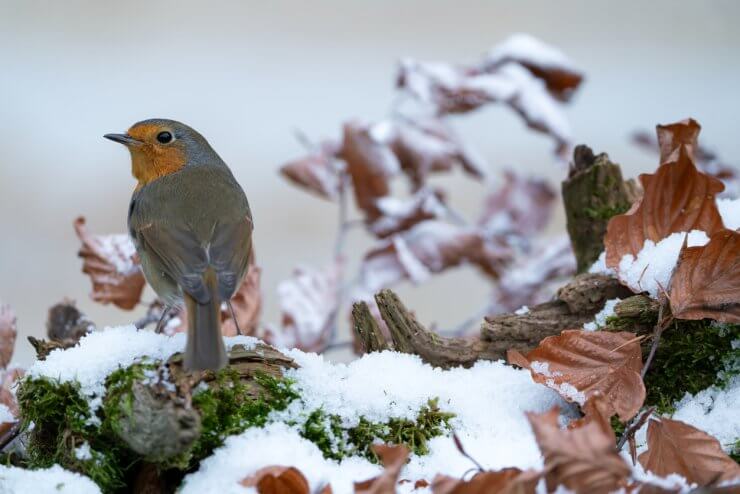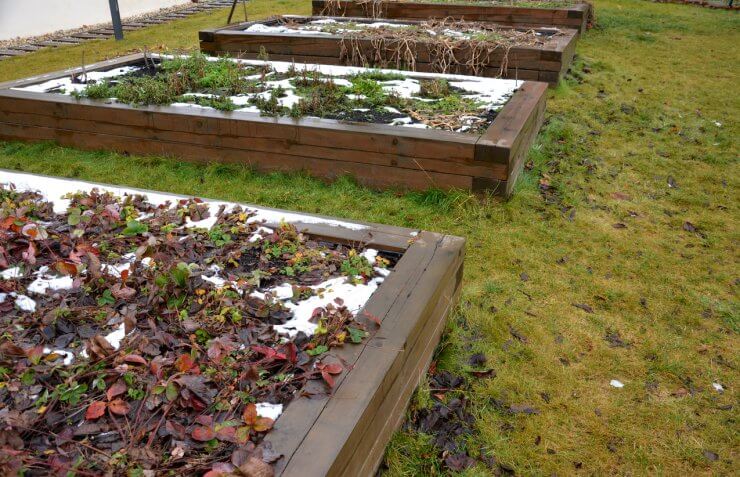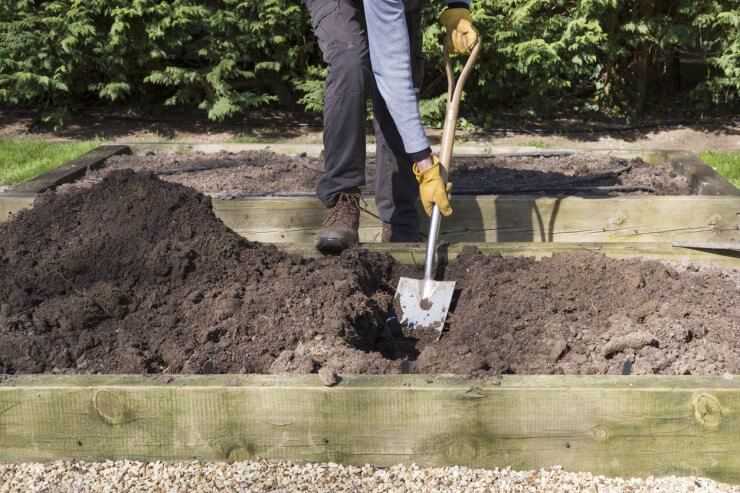
I have always wondered what’s a better deal for my garden: to let it go, or to tidy it up? I haven’t gotten into the trend of letting my whole yard go to weeds, but I’ve many-a-November let it go to the birds and bees. When I was a new gardener, I was always on top of it, then one year, as autumn rolled in, instead of my usual ritual of meticulously clearing out every dead plant and fallen leaf, I left my garden beds largely untouched. Come spring, I was amazed to find my garden teeming with life – beneficial insects I’d never seen before, birds nesting in the remnants of last year’s sunflowers, and even some surprise volunteer plants popping up where I least expected them.
This experience sparked a journey of discovery that changed how I approach garden maintenance. As it turns out, the decision to clean or not to clean our garden beds is far from simple. It’s a delicate balance between maintaining a tidy, productive garden and supporting the complex ecosystem that exists within it.

The Case for Leaving Your Garden Beds Alone
When we leave our garden beds untouched over winter, we’re essentially creating a natural habitat for various creatures. Dead plant material provides shelter for beneficial insects like ladybugs, lacewings, and native bees. These insects are crucial for pollination and natural pest control in the coming growing season.
Moreover, many birds rely on seedheads from plants for food during the colder months. The hollow stems of dead plants can serve as nesting sites for native bees and other pollinators. By leaving these resources in place, we’re supporting biodiversity in our gardens.
From a soil health perspective, leaving plant debris to decompose naturally can improve soil structure and fertility. As plant material breaks down, it adds organic matter to the soil, feeding beneficial microorganisms and enhancing the soil’s water-retention capabilities. This natural process mimics what happens in undisturbed ecosystems and can lead to healthier, more resilient plants in the long run.
But what about those pesky weeds and the potential for disease? It’s true that leaving plant debris can provide overwintering sites for some plant pathogens and pest insects. However, it’s important to note that many of these organisms are already present in the soil or surrounding environment. In a balanced ecosystem, predatory insects and microorganisms often keep these potential problems in check.
As for the concern about volunteer plants, like those 800 tomato seedlings from fallen fruit – while this can happen, it’s usually manageable. Many seeds won’t survive winter conditions, and those that do sprout can be easily removed or transplanted in spring if they’re not where you want them.

The Benefits of Cleaning and Preparing Garden Beds
On the flip side, there are valid reasons for cleaning up your garden beds. For gardeners dealing with specific disease issues, removing affected plant material can help break the disease cycle. For instance, if you’ve had problems with early blight on tomatoes, removing and disposing of infected plants (not composting them) can reduce the spore load in your soil for the next season.
Clearing beds in fall also provides an opportunity to amend your soil. Adding compost or well-rotted manure in autumn gives these materials time to integrate with your soil before spring planting. This can be especially beneficial in colder climates where the growing season is shorter.
For those battling persistent weed problems, fall is an excellent time to apply mulch or lay down cardboard. These methods can smother existing weeds and prevent new ones from germinating. By the time spring rolls around, you’ll have a clean slate for planting.
Clean beds can also warm up faster in spring, allowing for earlier planting in some cases. This can be a significant advantage in areas with short growing seasons.
And finally, it’s nice to be able to just jump into gardening without needing to clean everything out first!
Finding the Middle Ground
As with many aspects of gardening, the best approach often lies somewhere in the middle. Here’s a balanced strategy that I’ve found works well:
- Selectively clean: Remove diseased plant material and invasive weeds, but leave some sturdy plant stems and seedheads for wildlife.
- Chop and drop: Cut down larger plants and leave them on the soil surface as a natural mulch. This protects the soil while providing habitat for beneficial insects.
- Add organic matter: Apply a layer of compost or leaf mold to bare areas of soil. This feeds the soil ecosystem while improving structure and fertility.
- Mulch strategically: Use organic mulches like straw or wood chips in areas where you want to suppress weeds, but leave some areas unmulched for ground-nesting bees.
- Plan for biodiversity: Incorporate plants that provide food and shelter for wildlife throughout the year. Native plants are especially valuable for this purpose.
Remember, every garden is unique. Factors like your local climate, specific pest and disease pressures, and personal gardening goals all play a role in determining the best approach for your garden.
In my own garden, I’ve found that this balanced approach leads to a more resilient and productive ecosystem. Yes, I might have to deal with a few more volunteer tomatoes or spend a bit more time weeding in spring, but the benefits – a garden buzzing with beneficial insects, rich soil teeming with life, and the joy of discovering nature’s surprises – far outweigh these minor inconveniences.
Gardening is as much about nurturing an ecosystem as it is about growing food. By finding the right balance between tidiness and wildness, we can create gardens that are not only productive but also contribute to the health of our local environment.
What’s your experience with garden bed maintenance? Have you noticed any differences in your garden’s health or productivity based on your fall cleanup practices? Share your stories and insights – every garden has a lesson to teach, and we can all learn from each other’s experiences.


 Previous
Previous

